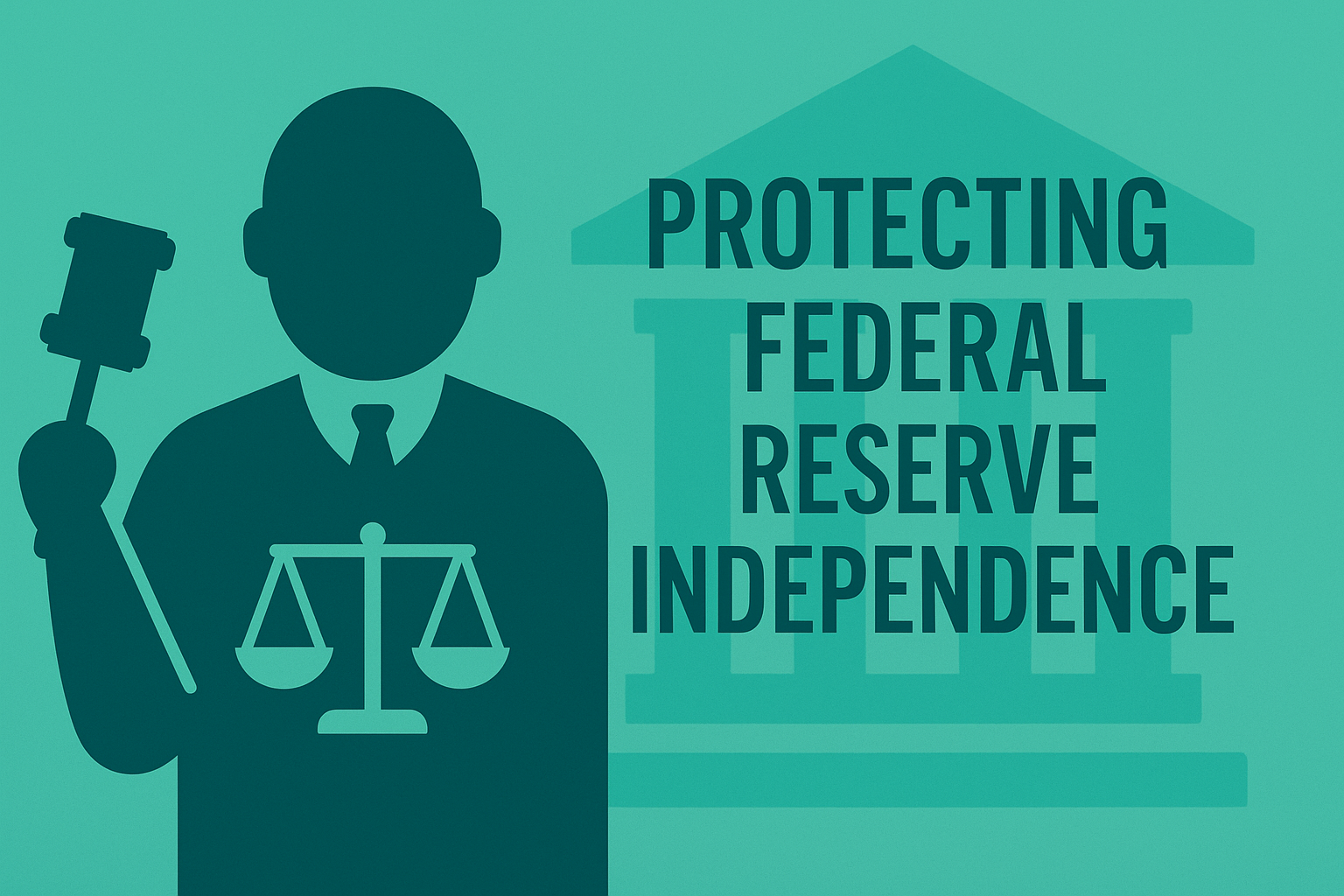Executive Summary
The Federal Reserve’s independence has long been a cornerstone of U.S. economic credibility. President Trump’s attempt to dismiss Governor Lisa Cook has placed the issue directly before the courts. The outcome of this case will not only determine Cook’s position but also define the limits of presidential authority over the central bank. To safeguard monetary stability, courts must interpret the law narrowly, apply strict due process, and reinforce the balance between independence and accountability.
1. The Legal Framework
The Federal Reserve Act grants governors 14-year terms and limits removal to situations with “cause.” This clause is designed to shield policy decisions from short-term political interference.
- Court responsibility: ensure “cause” is not expanded to include policy disagreements or political motives.
- Critical distinction: misconduct or incapacity may justify dismissal, but policy divergence should not.
2. Defining “For Cause”
To protect the Fed’s institutional role, courts should clearly define what constitutes legitimate grounds for dismissal:
- Valid grounds: serious misconduct (corruption, abuse of office, major breaches of confidentiality), incapacity due to illness.
- Invalid grounds: minor personal disputes, past private-life issues with no bearing on office duties, differences over monetary policy.
Such clarification will prevent future administrations from abusing the removal clause.
3. Ensuring Procedural Safeguards
Courts should require that any attempt to remove a governor respects due process:
- The governor must be given notice and an opportunity to respond.
- Judicial review should precede final removal, not follow it.
- This framework prevents unilateral, politically driven dismissals and protects institutional stability.
4. Balancing Independence and Accountability
While independence is crucial, the Fed is not entirely beyond democratic oversight. Its leaders are appointed by the president and confirmed by the Senate, and the institution reports regularly to Congress.
- Court guidance should emphasize: Independence in policy decisions must remain untouched, while accountability for misconduct remains enforceable.
- This balance ensures both credibility in markets and legitimacy in governance.
5. Long-Term Institutional Stability
This case is a stress test for the Fed’s independence. If courts allow broad presidential discretion, it could set a precedent for future political manipulation of monetary policy. Conversely, a ruling that limits dismissal power to narrowly defined misconduct will:
- Strengthen global confidence in the U.S. dollar and Treasury markets.
- Ensure continuity of monetary policy beyond election cycles.
- Preserve the Fed’s role as a neutral steward of price stability and employment.
Conclusion
The courts must:
- Interpret “for cause” narrowly to exclude political motives.
- Mandate procedural fairness in any dismissal process.
- Clarify the balance between independence and accountability.
By doing so, they will reinforce one of the United States’ most critical institutional safeguards and protect global confidence in U.S. monetary leadership.


